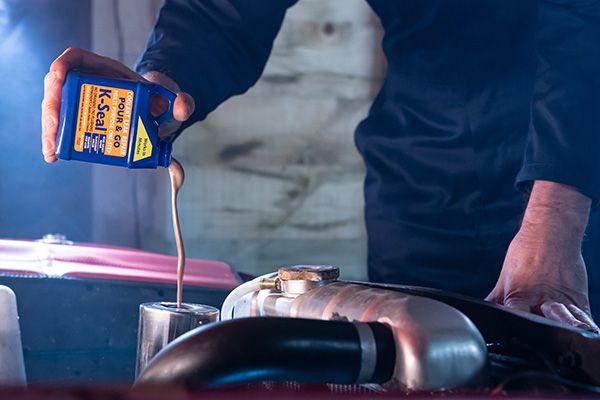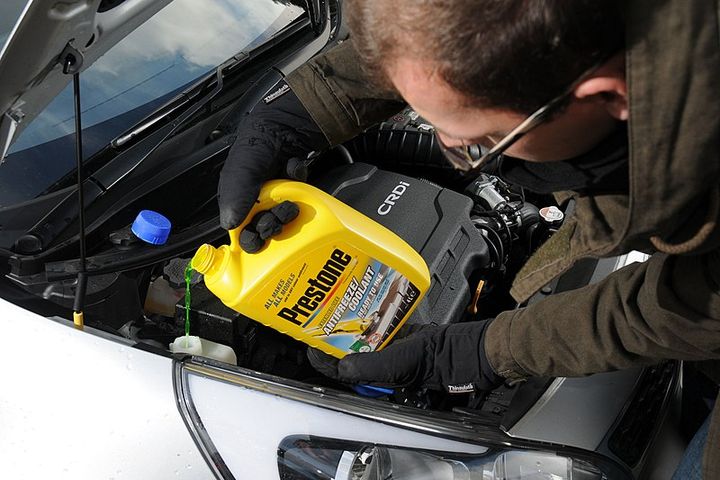


A coolant leak in your vehicle can lead to severe engine damage if left unaddressed. This guide provides an in-depth analysis of the costs associated with repairing a coolant leak, covering various factors that influence the overall expense. By understanding the potential repair costs, you can make informed decisions and address the issue promptly, preventing further damage and costly repairs.

Maintaining your vehicle's cooling system is crucial for ensuring optimal engine performance and longevity. A coolant leak can cause the engine to overheat, potentially leading to catastrophic damage. This guide aims to provide a comprehensive overview of the costs involved in repairing a coolant leak, empowering you with the knowledge to make informed decisions.

The first step in addressing a coolant leak is to identify its source accurately. Common leak sources include the radiator, hoses, water pump, head gasket, coolant reservoir, and radiator cap.
| Leak Source | Description |
|---|---|
| Radiator | Responsible for dissipating heat from the engine. Leaks can be caused by age, corrosion, or physical damage. |
| Hoses | Connect the radiator to the engine and other cooling system components. Can deteriorate, crack, or develop leaks over time. |
| Water Pump | Circulates coolant throughout the system. Leaks can occur due to faulty seals or bearings. |
| Head Gasket | Seals the cylinder head to the engine block, preventing coolant leaks into the combustion chambers. A blown head gasket can result in significant coolant loss. |
| Coolant Reservoir | Stores excess coolant and helps maintain proper system pressure. Cracks or damage can lead to leakage. |
| Radiator Cap | Regulates the pressure within the cooling system. A faulty cap can cause coolant leaks or improper pressurization. |
Identifying the exact source of the coolant leak is crucial for accurate repair cost estimation. The diagnostic process may involve visual inspection, pressure testing, or dye testing.
The cost of repairing a coolant leak can vary significantly depending on the source of the leak and the extent of the repair required.
| Repair Type | Cost Range |
|---|---|
| Minor Leak Repair | $50 - $200 |
| Radiator Replacement | $300 - $1,200+ |
Minor radiator leaks may be repairable using sealants or epoxy, costing $50 to $200, including labor. However, severe damage or multiple leaks may require a complete radiator replacement, ranging from $300 to $1,200 or more, depending on the vehicle make and model, plus labor costs.
| Repair Type | Cost Range |
|---|---|
| Single Hose | $50 - $150 |
| Multiple Hoses | $100 - $400+ |
Replacing a single coolant hose can cost between $50 and $150, including parts and labor. If multiple hoses need to be replaced, the cost can range from $100 to $400 or more, depending on the number of hoses and labor required.
| Repair Type | Cost Range |
|---|---|
| Seal Replacement | $200 - $400 |
| Bearing Replacement | $300 - $600 |
| Complete Replacement | $300 - $800+ |
If the water pump leak is caused by a faulty seal, replacing the seal may cost between $200 and $400, including labor. Replacing worn or damaged bearings can cost between $300 and $600, while a complete water pump replacement can range from $300 to $800 or more, depending on the vehicle and labor costs.
A blown head gasket is one of the most expensive coolant leak repairs, often costing between $1,000 and $2,000 or more for parts and labor. This repair involves removing the cylinder head, replacing the gasket, and reassembling the engine components.
Replacing a cracked or damaged coolant reservoir typically costs between $50 and $200 for the part and labor. A faulty radiator cap is an inexpensive fix, usually costing between $10 and $50 for the part and labor.
After repairing the coolant leak, it is often necessary to perform a coolant flush and refill to remove any contaminants or debris from the system. This process can cost between $100 and $200, depending on the vehicle and labor rates.
Labor costs can vary significantly depending on the repair shop, location, and the complexity of the repair. Most shops charge between $80 and $150 per hour for labor, with more complex repairs requiring additional time and expertise.
Several factors can influence the overall cost of repairing a coolant leak:
Vehicle Make and Model: Luxury or high-end vehicles often have more expensive parts and may require specialized labor, increasing the repair cost.
Vehicle Age and Mileage: Older vehicles with higher mileage may require additional repairs or part replacements, as components are more likely to be worn or damaged.
Leak Severity: The severity of the coolant leak can impact the repair cost. Minor leaks may be less expensive to fix, while severe leaks or those that have caused additional damage can significantly increase the overall cost.
Additional Damage: If the coolant leak has caused damage to other components, such as the engine or electrical systems, the repair costs can escalate significantly.
Specialized Labor Required: Some repairs, particularly those involving complex components or systems, may require specialized labor or expertise, which can increase the overall cost.
Neglecting a coolant leak can have severe consequences, including engine overheating, warped or cracked cylinder heads, blown head gaskets, seized engine components, or complete engine failure. These issues can result in significantly more expensive repairs or even the need for a complete engine replacement.
Addressing a coolant leak promptly is crucial to prevent further damage and costly repairs down the line. Regular inspections and maintenance can help identify potential issues before they escalate. Regularly maintaining your vehicle's cooling system and scheduling inspections can help detect coolant leaks early, allowing for timely repairs and preventing more extensive damage. This proactive approach can save you money in the long run and extend the lifespan of your vehicle's engine.
Repairing a coolant leak in your car can be a significant expense, with costs ranging from a few hundred dollars to thousands, depending on the source of the leak and the extent of the repair required. By understanding the various factors that influence the repair cost, you can make informed decisions and address the issue promptly. Regular maintenance and inspections are key to detecting coolant leaks early and preventing further damage to your vehicle's engine. If you suspect a coolant leak, it is advisable to consult a professional mechanic for an accurate diagnosis and cost estimate.
A blown head gasket is one of the most expensive coolant leak repairs, often costing between $1,000 and $2,000 or more for parts and labor. This repair involves removing the cylinder head, replacing the gasket, and reassembling the engine components.
A faulty radiator cap is an inexpensive fix, usually costing between $10 and $50 for the part and labor.
Addressing a coolant leak promptly is crucial to prevent further damage and costly repairs down the line. Regular inspections and maintenance can help identify potential issues before they escalate.
Several factors can influence the overall cost, including the vehicle make and model, age and mileage, leak severity, additional damage, and specialized labor required.
Neglecting a coolant leak can have severe consequences, including engine overheating, warped or cracked cylinder heads, blown head gaskets, seized engine components, or complete engine failure, resulting in significantly more expensive repairs or even the need for a complete engine replacement.
After repairing the coolant leak, it is often necessary to perform a coolant flush and refill to remove any contaminants or debris from the system, which can cost between $100 and $200.
Most repair shops charge between $80 and $150 per hour for labor, with more complex repairs requiring additional time and expertise, increasing the overall labor cost.
The radiator is responsible for dissipating heat from the engine. Leaks in the radiator can be caused by age, corrosion, or physical damage, and may require repair or replacement.
The water pump circulates coolant throughout the cooling system. Leaks can occur due to faulty seals or bearings, requiring repair or replacement of the water pump.
The head gasket seals the cylinder head to the engine block, preventing coolant leaks into the combustion chambers. A blown head gasket can result in significant coolant loss and is one of the most expensive repairs.

Miguel started tinkering with car radios as a teenager, fascinated by the intricate dance of wires and circuits. This passion led him to pursue a career as an automotive electrician. For the past 10 years, Miguel has tackled everything from flickering headlights to mysterious electrical gremlins. He thrives on troubleshooting electrical problems and enjoys sharing his knowledge to empower car owners to understand their vehicles better.







